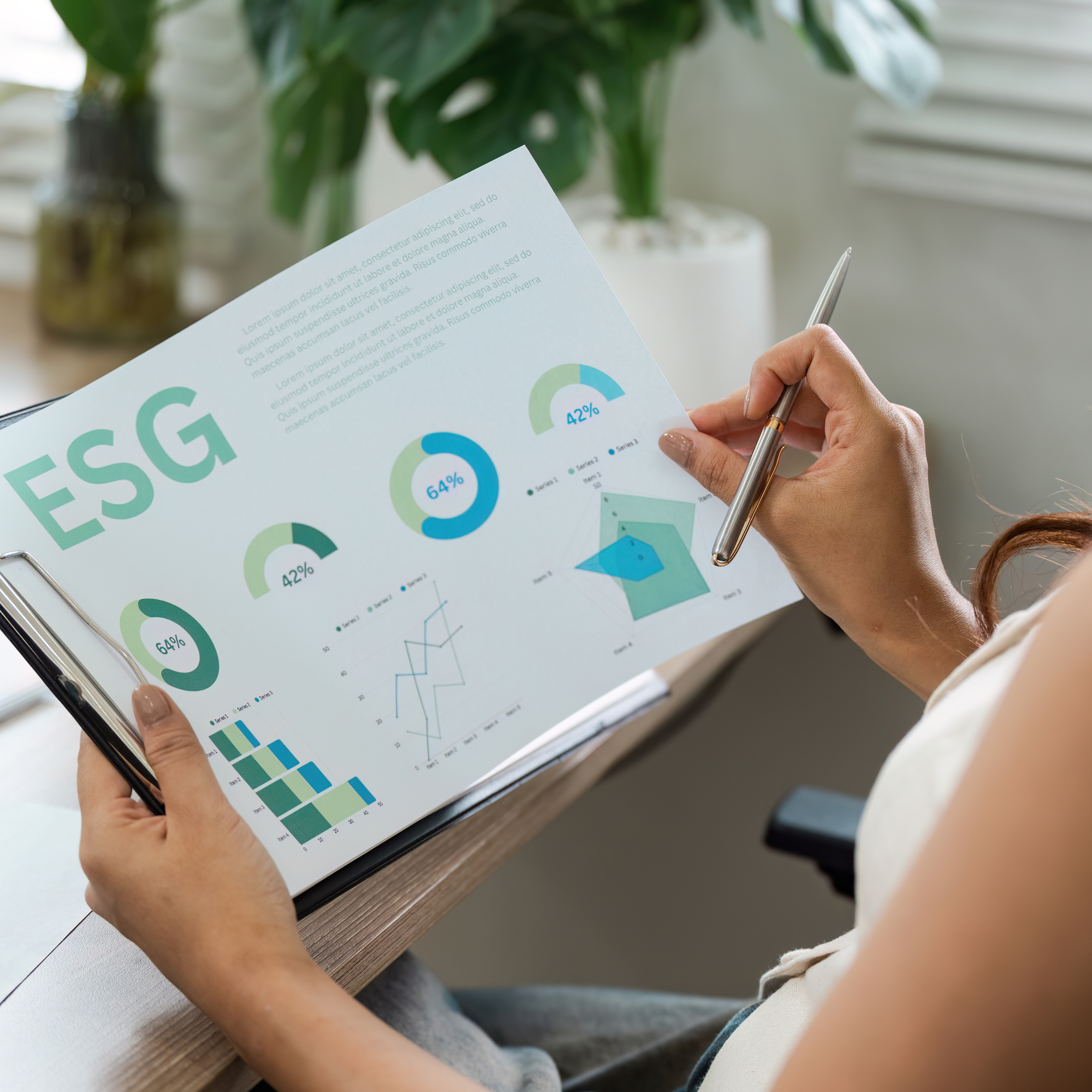Sustainability is evolving fast and has become a cornerstone in how companies think, operate, and grow in 2025. As expectations from customers, employees, and investors continue to rise, businesses can no longer treat sustainability as a nice-to-have. It is now a strategic necessity for companies to stay relevant, resilient, and trusted.
In this article, we’ll go through some of the most important sustainability trends shaping 2025 and why they matter.
Table of Contents
1. Circular Economy: Design for Longevity and Reuse
More businesses are shifting away from the traditional “take-make-dispose” model and embracing the circular economy – a smarter, more sustainable approach to production and consumption. Instead of designing products with short life cycles, the circular model focuses on keeping materials in use for as long as possible through reuse, repair, refurbishing, and recycling.
By doing so, companies not only reduce waste and lower their environmental impact, but also create more value from existing resources. Brands like IKEA and Patagonia are already integrating circularity into their product design, resale models, and materials sourcing.
In 2025, circular thinking is becoming a competitive advantage. As raw materials become more expensive and customers become more conscious, circular strategies help businesses cut costs, build resilience, and meet growing expectations for sustainable practices.
2. Regenerative Design: Going Beyond Sustainability
While sustainability often focuses on minimising harm, regenerative design goes a step further by aiming to restore, renew, and improve natural and social systems. It’s about giving more than you take, whether that’s by enriching ecosystems, improving soil health, or increasing biodiversity.
For example, some architects are now designing buildings that generate more energy than they consume, collect rainwater for reuse, and incorporate green roofs that support local wildlife. In agriculture, many regenerative practices aim to rebuild soil health and sequester carbon.
The mindset of regenerative design is spreading. In 2025, more businesses are realising that long-term resilience isn’t just about reducing harm – it’s about actively restoring the environments and communities they rely on.
3. Water Conservation Is Climbing the Agenda
Water scarcity is no longer a distant issue. According to the UN and other global researchers, nearly half of the world’s population will experience water stress for at least part of the year. This rising pressure is forcing businesses to take water use more seriously than ever.
Industries like manufacturing, agriculture, and textiles face increasing demand to reduce water consumption and improve wastewater treatment. Whether it’s operational risk, regulation, or public pressure – inaction is no longer an option.
Some companies are already stepping up. Fashion brand Levi’s, for instance, has significantly reduced its water use in denim production by adopting Water<Less® techniques – proving that resource efficiency and brand value can go hand in hand.
In 2025 and beyond, businesses that treat water as a critical, shared resource will be better equipped to navigate environmental limits and societal expectations.
4. The Green AI Revolution
AI is already transforming sustainability efforts – from predicting energy usage to optimising supply chains. But it also comes with a carbon cost. Training large AI models consumes vast amounts of energy, raising urgent questions about AI’s own environmental footprint.
According to research from the University of Massachusetts, training just one large AI model can produce as much CO₂ as running five average cars for their entire lifetimes. (University of Massachusetts Amherst, 2019).
While companies continue to leverage AI for sustainability, they must also take responsibility for the emissions that come with it. This means choosing greener data infrastructure, optimising models, and integrating sustainability into their AI strategy from the start.
5. Climate Reporting Standards Are Getting Stricter
Climate reporting standards are tightening, and transparency is becoming the norm. Governments, regulators, and investors are raising the bar, pushing companies to measure and publicly report their environmental impact more clearly and consistently.
Standards like the EU’s Corporate Sustainability Reporting Directive (CSRD) and the ISSB’s climate disclosure framework are shaping global expectations, making it harder for businesses to rely on broad claims without clear evidence.
As these standards and regulations tighten, companies that show measurable progress will stand out. Those that fail to prepare may face legal consequences, investor pressure, or reputational damage.
6. Supply Chain Transparency Is Non-Negotiable
As mentioned in the previous section, companies are increasingly being held to higher standards. This does not just apply to their own operations, but for every link in their supply chains. Customers, regulators, and investors are demanding full visibility into where and how products are made.
This means businesses must go beyond simply sourcing raw materials. They’re expected to ensure ethical labour practices, fair wages, and environmentally responsible production across suppliers, manufacturers, and distributors.
Tech and fashion brands like Fairphone and Patagonia are setting new benchmarks by publishing detailed supply chain data and partnering with verified ethical suppliers.
In 2025, companies that can be this transparent with their supply chains will be seen as more trustworthy, future-ready, and aligned with global sustainability goals. Those that can’t risk reputational damage and regulatory penalties.
7. The ESG Skills Gap Is Growing
Sustainability strategies are only as strong as the people behind them. And right now, there’s a shortage of professionals who understand ESG, climate risk, and ethical reporting.
Companies that want to meet sustainability goals, or comply with new regulations, need people who understand the landscape.
According to LinkedIn’s Global Green Skills Report, job postings requiring “green skills” have grown by over 8% annually since 2015, while the talent pool hasn’t kept up. This is a clear signal: investing in education is part of any serious ESG strategy.
Sustainability Is Now a Business Imperative
These trends show that sustainability and ESG are no longer “nice-to-haves.” They’re core to business resilience, innovation, and trust.
In 2025, the businesses that will thrive are the ones already preparing: redesigning their models, engaging their teams, and aligning values with action.
Smart companies are already investing in up-skilling their workforce – so their people are ready to lead the change.
Ready to take the next step?
Explore Hyper Island's Sustainability Change Leadership Upskill course and Circular Service Design Upskill course to discover how you can be part of driving real, lasting change.


WANT TO GET NOTIFIED ABOUT OUR EVENTS?
Join our mailing list for tips, events, and opportunities.

